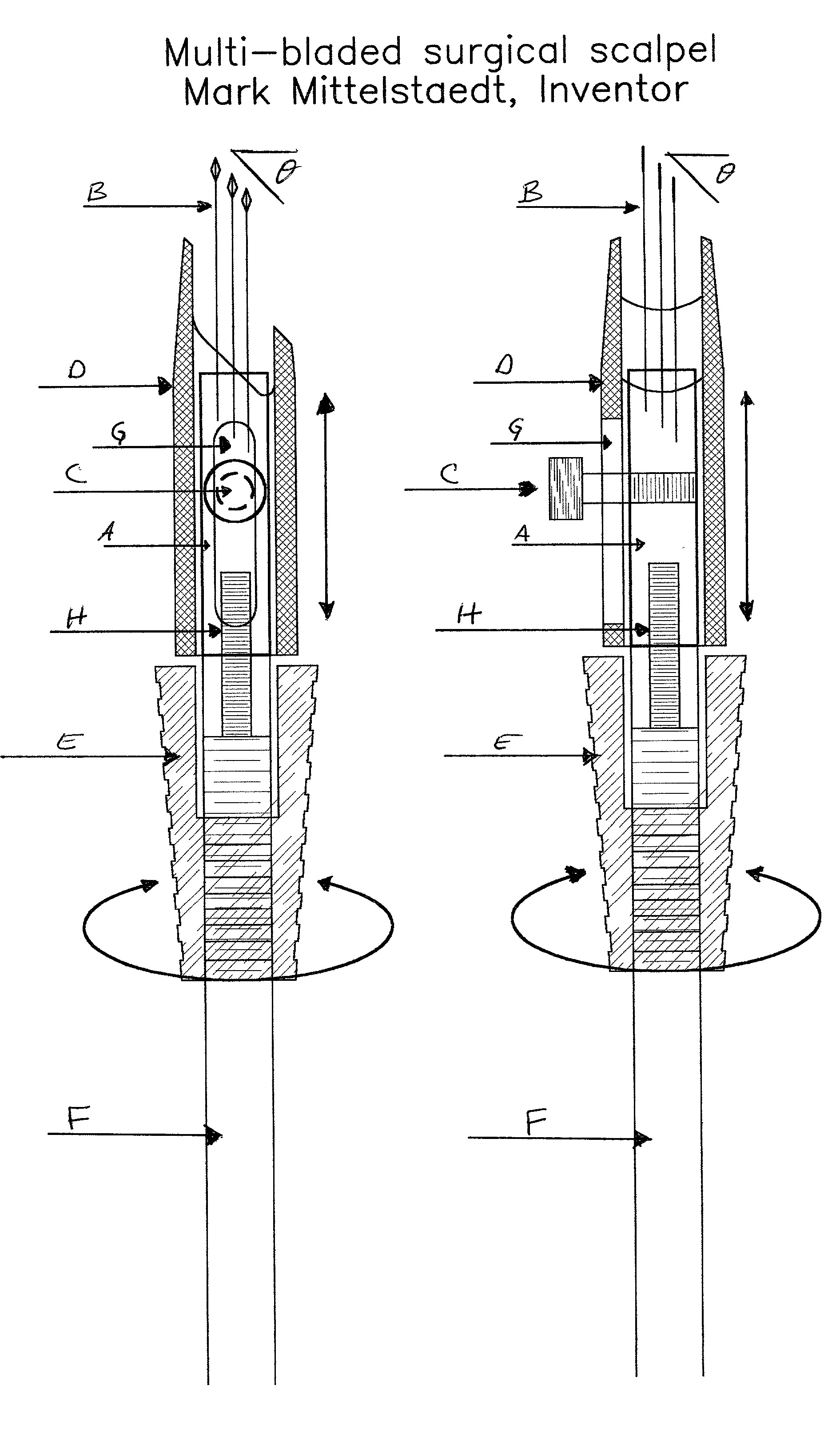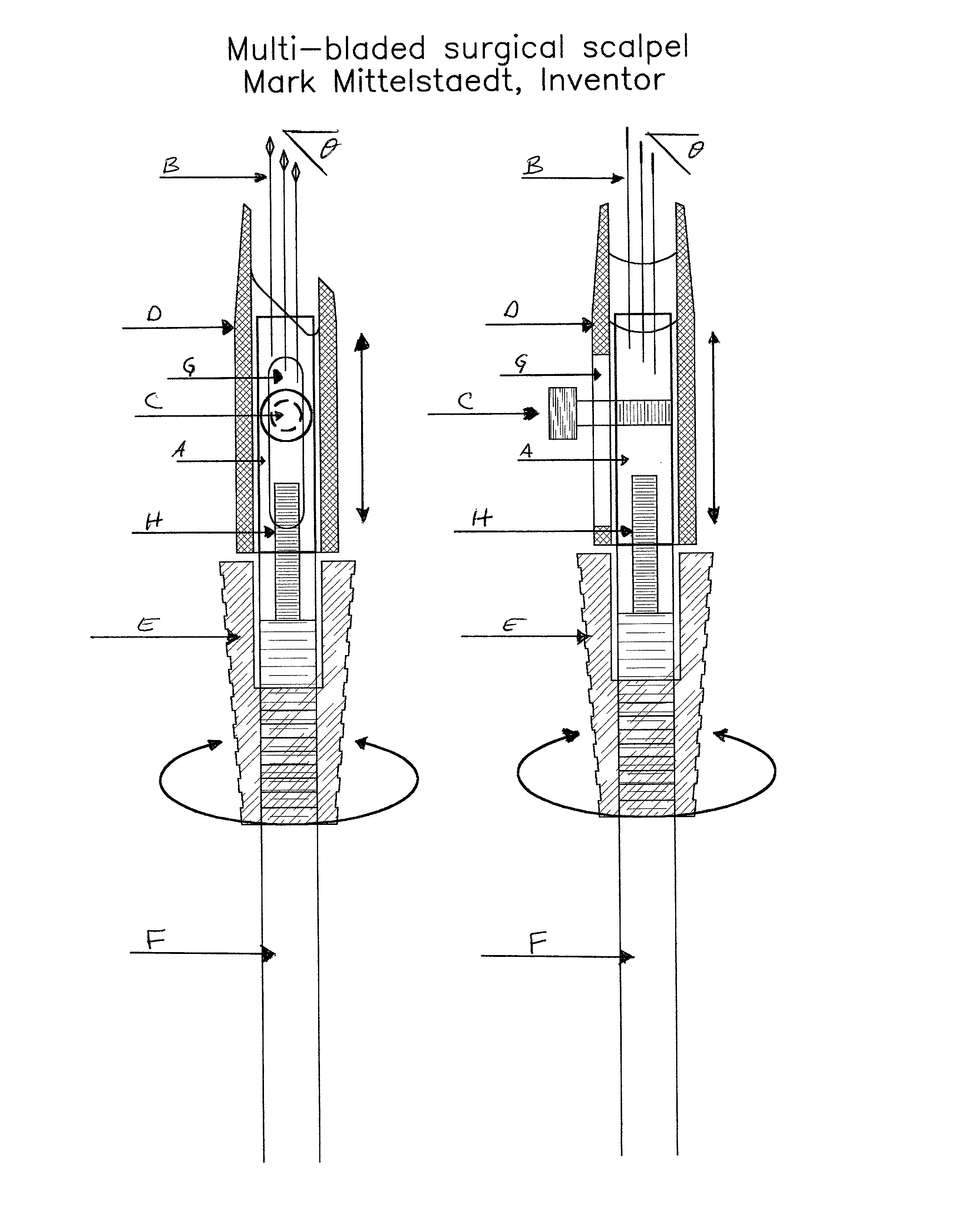Multi-bladed surgical scalpel
a surgical scalpel and multi-blade technology, applied in the field of multi-bladed surgical scalpels, can solve the problems of increasing post-surgical facial swelling, affecting the treatment effect, and reducing the amount of time a transplant patient has to make all the necessary incisions, so as to reduce the amount of time a transplant patient spends, the effect of easy control of the depth
- Summary
- Abstract
- Description
- Claims
- Application Information
AI Technical Summary
Benefits of technology
Problems solved by technology
Method used
Image
Examples
Embodiment Construction
[0022] There was nothing like this, so I started from scratch. There were no inventions that allowed for blade mounting close enough such that one area of scalp could be incised for hair transplantation purposes, then the tool moved to an adjacent area to repeat the process. In this embodiment, the blade holder is machined from Delrin, and all the other parts from aluminum, although newer versions might use different materials.
[0023] The blade holder is machined from medical grade Delrin, using {fraction (1 / 4)}" diameter, 1" long sections. These sections are machined to provide an orientation flat along the top 0.1" of a vertically oriented section. Blade holes are then drilled into the top such that the angle of the plane defined by the blade tips is ergonomically desirable angle--in this case, 45 degrees. The blade holes get deeper as they are drilled from left to right to achieve this angle. The orientation flat is parallel with this left--right line. 4.times.40 holes are then ta...
PUM
 Login to View More
Login to View More Abstract
Description
Claims
Application Information
 Login to View More
Login to View More - R&D
- Intellectual Property
- Life Sciences
- Materials
- Tech Scout
- Unparalleled Data Quality
- Higher Quality Content
- 60% Fewer Hallucinations
Browse by: Latest US Patents, China's latest patents, Technical Efficacy Thesaurus, Application Domain, Technology Topic, Popular Technical Reports.
© 2025 PatSnap. All rights reserved.Legal|Privacy policy|Modern Slavery Act Transparency Statement|Sitemap|About US| Contact US: help@patsnap.com


